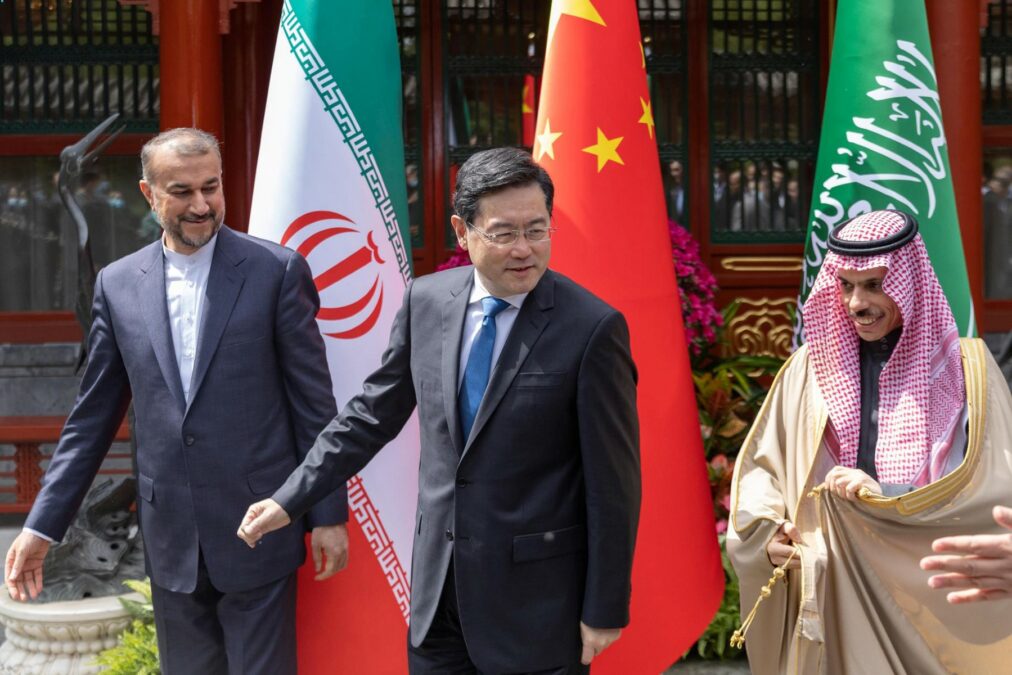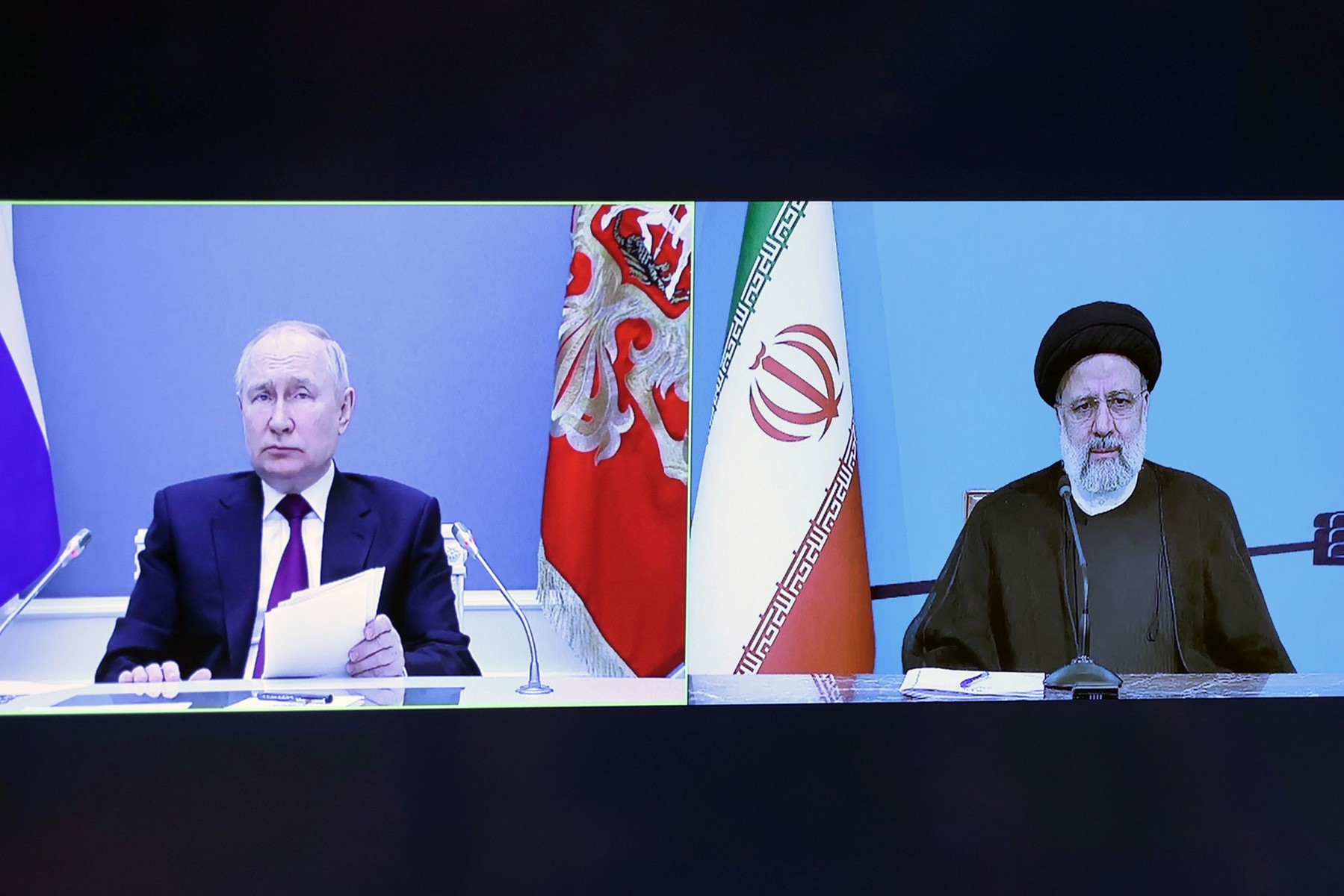Dubai, UAE – Iran’s pivot to Russia and China has been driven by various factors, most notably the United States’ withdrawal from the 2015 Joint Comprehensive Plan of Action (JCPOA) on May 8, 2018, says a study published by Middle East Institute.
Quoting Iran’s foreign ministry statement “the world is not just Europe and America,” the study cites it as a proof of Iran’s departure from its traditional balancing act between East and West.
The decision by the Trump administration to abandon the nuclear deal deeply disillusioned the Iranian leadership, the study explains, eroding any hope for a potential rapprochement with Washington. Tehran had initially agreed to sign the JCPOA with the Obama administration, expecting substantial reductions in its nuclear program to be met with the lifting of significant US economic sanctions.
Following the inauguration of Ebrahim Raisi as Iran’s president on August 5, 2021, the country’s pivot to the East has become more pronounced.
Iran’s new foreign policy approach, according to the study, involves a twofold strategy. First, it seeks to deepen cooperation with Russia, aiming to secure intelligence on Israeli and American operations against Iran. Second, Iran desires to tap into Moscow’s potential political and intelligence assistance during the transition period to the third supreme leader of Iran. These objectives align with Russia’s fundamental interests regarding Iran and its relations with the West.

There are other interests. For example, Iran is expected to receive 24 Su-35 fighter aircraft from Russia in addition to S-400 air-defense systems. Tehran, in turn, has also supplied Moscow with low-cost drones and weapons systems.
“Additionally, the two countries are cooperating in the energy sector, with Russia reportedly having delivered 30,000 tons of diesel fuel to Iran in February and March 2023,” the study highlights. “Yet given Russia’s technological limitations in the energy sector, it is not clear whether these projects will eventually and efficiently materialize.”
Unlike Russia, China’s engagement with Iran is primarily driven by political and commercial interests, rather than a strategic long-term calculus, the study states. China maintains cautious parallel actions with the United States in the Middle East, rather than positioning itself in opposition.
“China confines itself to mostly political and commercial relations with Iran and appears to cautiously act in parallel to the U.S. in the Middle East rather than in opposition to it,” the study states. “Beijing has immense short-term and long-term commercial and technological interests in maintaining peace and cooperation with Israel as well as with major Arab countries, such as Saudi Arabia and the UAE.”
China’s mediation role between Iran and Saudi Arabia, however, showcases its diplomatic prowess and its ability to maintain good relations with various actors in the Middle East.
One conspicuous aspect of Iran’s pivot to Russia and China is that these countries are less concerned with Iran’s internal “political system, constitutional structures, or governmental machinery.” compared to the United States and Europe, says the study.
Iran recently pursued rapprochement with Saudi Arabia, marking a complete U-turn in its stance. Chinese mediation played a significant role in facilitating this shift, as Iran recognized the need to compromise with Saudi Arabia to mitigate its influence among Iranian minorities and opposition groups.
“Of its three main adversaries, namely, the US, Israel, and Saudi Arabia, Iran recently concluded that a rapprochement with Saudi Arabia is a possibility, having made a complete U-turn on this in March 2023, with the help of Chinese mediation,” the study says. “Iran had learned the hard way to compromise with the Saudis, given the latter’s instrumental political and financial role among Iranian minorities inside the country as well as Iranian opposition groups in Europe and the US.”
Iran’s incremental moves toward China and Russia is said to indicate an unwillingness to redefine its national security doctrine and strengthen its position on the global stage. As the world becomes increasingly multipolar, Iran is recalibrating its foreign policy priorities and aligning itself with powers that offer strategic advantages and political leverage.
While the pivot to the East is being pursued discreetly, Iran continues to make incremental concessions on its nuclear program to create an impression that a new deal can replace the JCPOA. This two-tiered approach aims to secure Iran’s interests while preserving its standing and influence in the international arena, the study explains.
“The former approach is being implemented with almost zero fanfare and the latter with extensive publicity,” the study points out.

